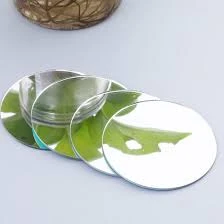

Understanding Triple Low-E Glass The Future of Energy-Efficient Windows
In the modern world, energy efficiency has become a priority, especially in residential and commercial buildings. A significant contributor to energy loss in buildings is inefficient window systems. In response to this challenge, advancements in glass technology have led to the development of triple low-emissivity (low-e) glass—a game-changer in the industry. This article explores what triple low-e glass is, its benefits, and its impacts on sustainability and energy conservation.
What is Triple Low-E Glass?
Triple low-e glass refers to a type of insulated glazing unit that incorporates three layers of low-emissivity coatings. These coatings, which are typically metallic, are applied to the glass surface to minimize the amount of infrared and ultraviolet light that can pass through without compromising the amount of visible light that enters. The triple aspect means that there are three separate panes of glass, typically separated by argon or krypton gas to enhance insulation. This design significantly improves a building's thermal performance.
How Does It Work?
The low-e coating works by reflecting heat back into the room during the winter months while keeping interior spaces cooler during the summer. This is achieved through the selective transmission of solar radiation, which allows sunlight to warm the interiors without excessive heat loss or gain. Because of its structure, triple low-e glass serves as a barrier against outside temperatures, helping to maintain a comfortable indoor environment and reducing reliance on heating and cooling systems.
Benefits of Triple Low-E Glass
1. Energy Efficiency One of the most prominent benefits of triple low-e glass is its ability to conserve energy. By minimizing energy loss through windows, buildings can significantly reduce their heating and cooling costs. Studies have shown that triple glazing can reduce energy consumption by up to 30–50% compared to single-paned glass and even 10–15% compared to double-glazed options.

2. Enhanced Comfort By maintaining a consistent indoor temperature, triple low-e glass contributes to overall occupant comfort. It reduces drafts and cold spots near windows, enhancing the living or working experience.
3. Reduced UV Exposure The low-e coating also serves as a barrier against harmful ultraviolet rays, which can fade furnishings, flooring, and artwork over time. This protective feature extends the life of indoor materials and helps maintain their aesthetic appeal.
4. Noise Reduction The multiple panes of glass in a triple glazing system can also aid in noise reduction. The added layers create a buffer against outside sounds, making the indoor space quieter.
5. Environmental Impact By decreasing energy consumption, triple low-e glass contributes to lower greenhouse gas emissions. This aligns with global sustainability goals, making it an excellent choice for environmentally conscious builders and consumers.
Installation and Considerations
While the benefits of triple low-e glass are clear, it’s important to consider a few factors before installation. The initial investment can be higher than standard glazing options; however, the long-term savings on energy bills can outweigh the upfront costs. Additionally, it is vital to work with qualified professionals to ensure proper installation and to assess the building’s specific needs regarding insulation and energy efficiency.
Conclusion
In conclusion, triple low-e glass represents a significant advancement in energy-efficient window technology. With its superior thermal performance, noise reduction capabilities, and protective qualities, it offers a comprehensive solution for both residential and commercial buildings seeking to enhance energy efficiency and sustainability. As we continue to move toward a more energy-conscious future, embracing technologies like triple low-e glass will play a crucial role in reducing our carbon footprint and improving our living environments. Investing in triple low-e glass not only benefits individual buildings but also contributes positively to the global fight against climate change.